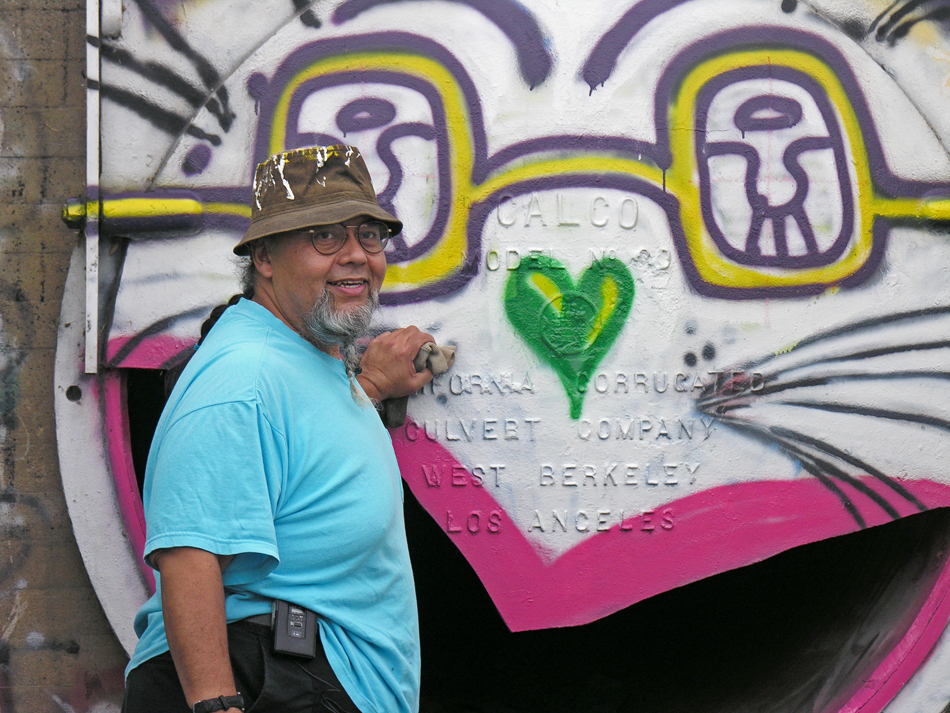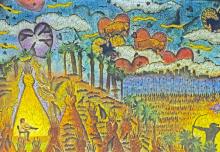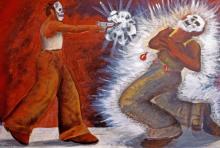


The life and work of the prolific and socially conscious Chicano artist Leo Limón is the focus of a book recently published by UC Santa Barbara's Chicano Studies Institute and the California Ethnic and Multicultural Archives (CEMA), a division of the Special Collections Department of the UCSB Library.
Titled "The Art of Leo Limón: Giving Voice to the Chicano Experience," the book contains a series of interviews with the highly popular artist, who is one of the most prominent in the Chicano arts movement.
"We definitely want to call attention to the beautiful visual legacy of the Chicano Movement," said CEMA director Salvador Güereña. "We want people to come to an appreciation and have a more enriched understanding of its history and aesthetics, but also its multidimensional value."
"The Art of Leo Limón: Giving Voice to the Chicano Experience" is also the final work of former UCSB oral historian David Russell, who conducted interviews with Limón in Los Angeles over several years. Russell retired from his post in 2010.
Published in late 2011, the book is the culmination of the multi-year "ImaginArte: Interpreting and Re-imagining Chicano@ Art," an interdisciplinary collaboration between the CSI's Faculty Research Working Group on Chicana/o Visual Art and CEMA. It's an effort that brought a number of visiting artists and lecturers to UCSB who focused on the lives and culture of one of California's largest populations, and, in so doing, provided needed documentation to existing Chicana/o art collections in CEMA.
"There are so many untold stories," said Güereña.
The Chicano Movement began as a social, cultural, artistic, and political offshoot of an ongoing Mexican-American fight for recognition and equality in the 1960's. Similar to the African-Americans' efforts for civil rights in the American South during the same time period, Mexican-Americans, who embraced the once-derogatory term "Chicano," were concerned about racial inequalities, social injustices, disenfranchisement of youth, the Vietnam War, and mistreatment of people of color.
The result was an explosion of Chicano culture and expression in the American Southwest, one that produced artists like Limón, who was born in Los Angeles, a son of immigrants who fled Mexico during the Revolution of 1910-1920.
Influenced by the social and political context of his early years and a search for his own Mesoamerican roots, Limón rapidly became one of the most visible artists at Self-Help Graphics & Art, a studio in Los Angeles that promoted and continues to promote Latino arts.
But the Chicano Movement wasn't limited to Los Angeles, according to Güereña.
"If we didn't have the movement, we wouldn't have Chicano Studies at UCSB," he said. Limón came to the UCSB campus in 2009 for a one-month residency, during which he lectured to students from UCSB and Dos Pueblos High School.
The book and its companion documentary video were produced on a shoestring budget with the support of faculty, and the work of graduate students, undergrads, and even high school students. The set is being distributed by the Chicano Studies Institute at UCSB.
In April, said Güereña, Limón will return to the campus to make a presentation on his work. There are also plans for a screening of the documentary video "Leo Limón: Portrait of an Artist" in the upcoming months.
Related Links



